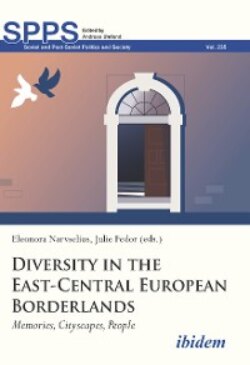Читать книгу Diversity in the East-Central European Borderlands - Группа авторов - Страница 14
На сайте Литреса книга снята с продажи.
Introduction
ОглавлениеThis chapter is based on an interdisciplinary research project on the history and memory of the urban environment in four cities where World War II atrocities and postwar totalitarian regimes and new national belongings crushed the societal system: L’viv and Chernivtsi in Ukraine; Chişinău in Moldova; and Wrocław in Poland.1 It sets out to examine the urban environment and daily life in the interwar years and during World War II, and the knowledge of and attitudes towards the built heritage among the postwar and present population and in urban planning. In-depth attention is devoted to the case of the Jewish population, which was particularly important in the pre-war urban environment and which was annihilated with particular brutality.
The four cities are examined here in the following four frames: (1) the interwar urban environment in its historical context, including details on inhabitants, shops, and selected meeting places and other urban spaces, and the breakthrough of modern architecture and urban planning; (2) events during and after World War II, which brutally brought the earlier urban culture to an end, and which are associated with remembrance sites linked to the Holocaust and other war crimes; (3) urban planning, attitudes to and treatment of pre-war heritage and historical traces in the postwar socialist period in the new national context; and (4) the post-socialist period with new possibilities for the discussion and treatment of history and memories, also reflected in urban planning.2
The aim of the chapter is not to develop theory or method or to confirm or disconfirm hypotheses, but to summarize and discuss concrete facts in the four cities. The pieces of the puzzle have been investigated as precisely as possible. These include the names of interwar inhabitants, shops, and enterprises linked to selected streets, identified via the study of archival documents, historical directories, oral testimony and memoirs, and historical photographs and maps, and by extracting information from other available research and secondary literature on the cities. Historical figures with special significance for the urban culture and identity are also mentioned.
Today, a new urban culture is developing in the four cities, with new collective and cultural memories, lacking a direct relationship to the pre-war urban culture. In this situation, interest in the pre-war urban culture is rising today in all four cities, as part of an increasingly European orientation within these societies.
